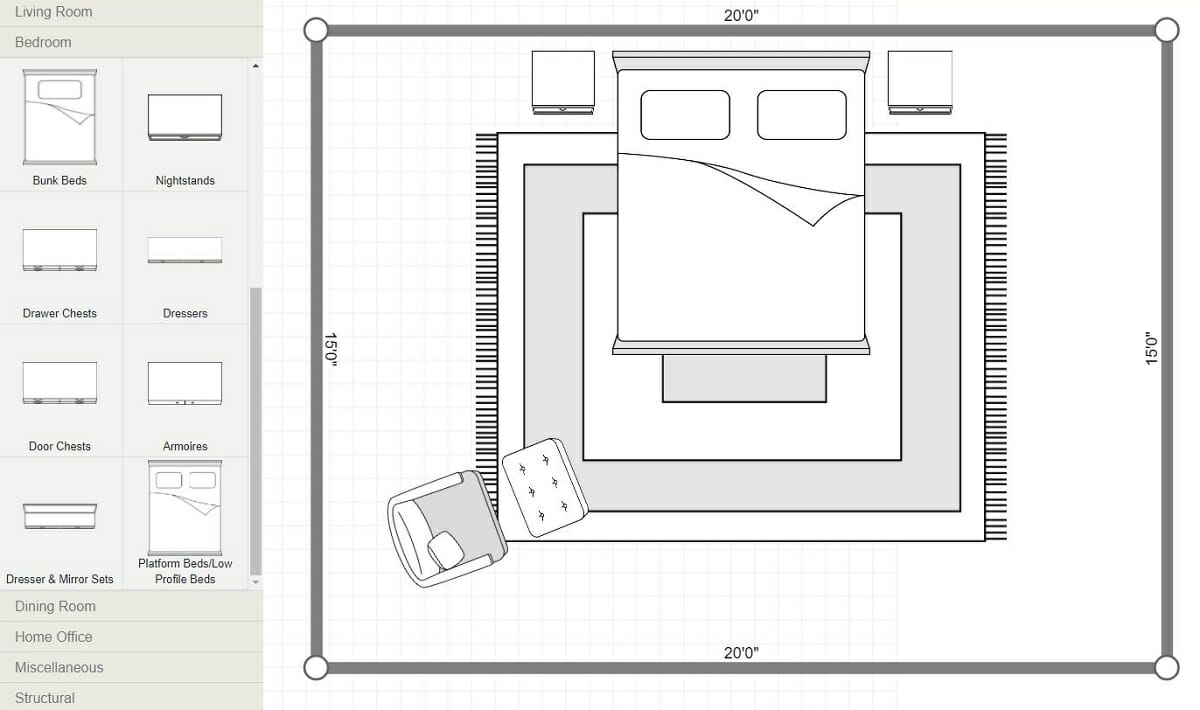Table Of Content
- Sail Away in Style: Design Trends for Decorating Your Yacht's Living Spaces
- Midcentury Modern Meets Classic Japanese Architecture
- Nameplates and Letter Boxes – Changing With the Time
- OH! House
- This 1930s L.A. Bungalow Oozes With Modern Glamour, and It Can Be Yours for $4.3 Million
- From Mountains to Seas: The Diversity of Earth's Landscapes and How to Incorporate Them in Our Homes
- Which Direction Do Japanese Homes Face?

About half of any job is completed in the shop before our materials go to site. The structural and finish elements of each house are pulled from our lumber decks, jointed to make the lumber perfectly straight, flat and square and then milled to precise dimensions. Following that, each piece is allocated to specific locations in the house. All the joinery is drawn out in ink before the joinery is cut out, and the pieces are then hand-planed to silky smoothness, chamfered, wrapped in shrink wrap, and safely stored before going to the site.
Sail Away in Style: Design Trends for Decorating Your Yacht's Living Spaces

The slight translucency of the fabric allows the house to glow from the inside out as the day progresses. This is a small house for a family of five who chose to live without a roof over half of their home to escape the logic of such an urban economy. The house’s exterior is simple, with siding and residential bands found in the neighborhood. The combination of metal grills on the façade, beautiful wooden furniture, and nature’s involvement blends in beautifully. Because social gatherings and interactions are important, a large deck connects both houses.
Midcentury Modern Meets Classic Japanese Architecture
In the kitchen and dining room, a glass sliding door opens to a balcony that offers fantastic views of the city. Japanese interior design is renowned for its timeless elegance, minimalist aesthetic, and profound connection to nature. Rooted in centuries-old traditions and influenced by Zen philosophy, Japanese interiors evoke a sense of tranquility, harmony, and mindfulness. One of the most captivating expressions of Japanese design is the creation of Zen-inspired living spaces, where simplicity and serenity reign supreme. Embracing the principles of wabi-sabi – the appreciation of imperfection and impermanence – Japanese interior design encourages a pared-down approach that focuses on essential elements and natural materials. In this guide, we will explore the fundamental concepts of Japanese interior design and how to apply them to create a Zen-inspired living room that exudes peace, harmony, and promotes well-being for everyday living.
CASE-REAL transforms 80-year-old traditional japanese house into craft beer brewery - Designboom
CASE-REAL transforms 80-year-old traditional japanese house into craft beer brewery.
Posted: Sun, 31 Dec 2023 08:00:00 GMT [source]
Nameplates and Letter Boxes – Changing With the Time
Once the client approves, we’ll have an informal meeting with planning and building officials to make sure they’re generally okay with what we propose. If things are looking good with the planning department, we’ll continue. If not, we’ll go back and revise our site plan.Structural DrawingsWe’ll work with engineers to produce structural and detail drawings for the project. We’ll also put together sectional drawings and a reflected ceiling plan.
It is an advantageous pairing, with both parts perfectly accentuating the other. "Historically, Scandinavian design has been heavily influenced by Japanese style, so it makes sense why these two aesthetics work so well together," says Joel Wong and Amanda Gunawan, co-founders of OWIU Design. "Both carry similar qualities of minimalism, clean lines, and lighter material palette schemes." But just when it seems there’s nothing new under the sun, as the proverb goes, an ethereal blend of East meets West sweeps across social media feeds.
Japanese farmer's house transformed into hotel by Shotaro Oshima Design Studio The Strength of Architecture From ... - Metalocus
Japanese farmer's house transformed into hotel by Shotaro Oshima Design Studio The Strength of Architecture From ....
Posted: Mon, 15 Jan 2024 08:00:00 GMT [source]
OH! House
These can encompass functionalities such as blinds that shield interiors from intense sunlight or window frames designed to eliminate drafts and breezes. When is comes to modern houses Japan has plenty of imaginative concepts to delight architecture fans. Completed by Tato Architects, this house has a highly creative design with three barn-like volumes on top of a gray platform. Located in the Hyogo Prefecture in a mountainous landscape with often overcast weather conditions, the dwelling features cleverly designed spaces. The base contains the main living areas, while the three volumes house a guest room, a bathroom, and a greenhouse. Both the bathroom and the sunroom feature corrugated polycarbonate panels and enhance the lighting and ventilation for the lower volumes.
This 1930s L.A. Bungalow Oozes With Modern Glamour, and It Can Be Yours for $4.3 Million
The porch is also reminiscent of the traditional Japanese tataki, the ground floor right before the entrance door. Japanese furniture often sits low on the floor and utilizes both clean lines and organic shapes. Each piece is streamlined and focuses on functionality while also implementing design elements like soft curves or subtle textures. Japanese design echoes the country's verdant gardens and architecture, too. "It's such a beautiful culture," Ashizawa says, referencing the gardens and their timeless beauty.

When redesigning "Madmen" actor Vincent Kartheiser’s Hollywood cabin, architect Funn Roberts installed custom shoji-style screens of to conceal the closet and provide privacy for the adjacent shower and soaking tub. Surrounding the home is a concrete parapet that encloses the entry courtyard. And floating above is the bedroom level, which is wrapped in a façade of Siberian larch, a sustainable softwood that the architects chose to leave unfinished, “with no experiment,” he admits. "Pieces can have dual purposes like banquettes that can also act as a place to take a nap or a custom futon that folds into the ground for additional living space," says Wong and Gunawan. And that’s welcome at a time when many more of us are working in our homes, which means spending more time there.
The traditional architectural forms found in Japan are essentially pure structure which is meticulously joined using complex, interlocking joinery. This carpentry is so precise it doesn’t need to be covered up with moldings and trim. So, we almost never test-assemble anything—the joinery is so tight pieces would be damaged in trying to take them apart once assembled. They required about half the floor area that western houses require for the same functions. They provided a cool, shaded escape from hot summers, and basic shelter from the elements to get occupants through cold winters. You surely know Tokyo’s modern skyscrapers and traditional temples, but how do regular Japanese houses look?
Because Japanese style emphasizes functionality, it is also important to evaluate which of your belongings serve a specific purpose in your day-to-day life. This compact Japanese residence boasts a straightforward arrangement and a spacious interior. The residence’s standout feature is the deck beside the river, offering captivating sky vistas. Irises, maple leaves, temple candle stands and a kimono are displayed against a golden folding screen (byobu). The pattern on the kimono is made especially for early summer, and features carp swimming up the waterfalls, Legend has it that the carp can become dragons if they can succeed in reaching the top.
Prioritizing privacy and an outdoor link, this Japanese home employs sliding doors and large windows for abundant natural light. The design of this modern Japanese house is focused on optimizing the presence of natural light and airflow. The incorporation of skylights and expansive windows facilitates the influx of abundant daylight, resulting in a well-lit and breezy ambiance. The standout feature of the dwelling is the splendid garden enveloping the house.
A unique roof design imparts this modern Japanese house’s open and connected feel. The interiors maximize natural light, ensuring a comfortable living environment. Seamlessly blending with nature, this modern Japanese house combines wood and generous windows to cultivate a warm, inviting atmosphere.
External aluminum blinds, high-performance sliding wooden window frames, and heat insulating screens enhance the home’s ability to maintain insulation and airtightness. The following homes showcase the latest in residential Japanese architecture and design. Japandi homes, though a more established style now, date back hundreds of years. “After the closed-border policy of Japan, which lasted for around 200 years, they opened their borders in the mid 1850s,” Rietbergen explains. Scandinavian designers and artists began visiting Japan and quickly became enthralled with the Japanese style. “They were very enthusiastic about the country, culture, and all the amazing items in the shops.
Named F Residence, this Japanese modern house in Hyogo, Japan features unmistakable brutalist design cues as well as minimalist elements. The concrete structure boasts a clean rectangular form with a natural stone base. A tall concrete wall shelters the outdoor area from the surrounding houses, offering a private space to catch some sunshine in peace. Upstairs, the living room opens to a balcony that provides beautiful views of trees and mountains in the distance. It features carefully selected decorative items and only a few pieces of furniture.














